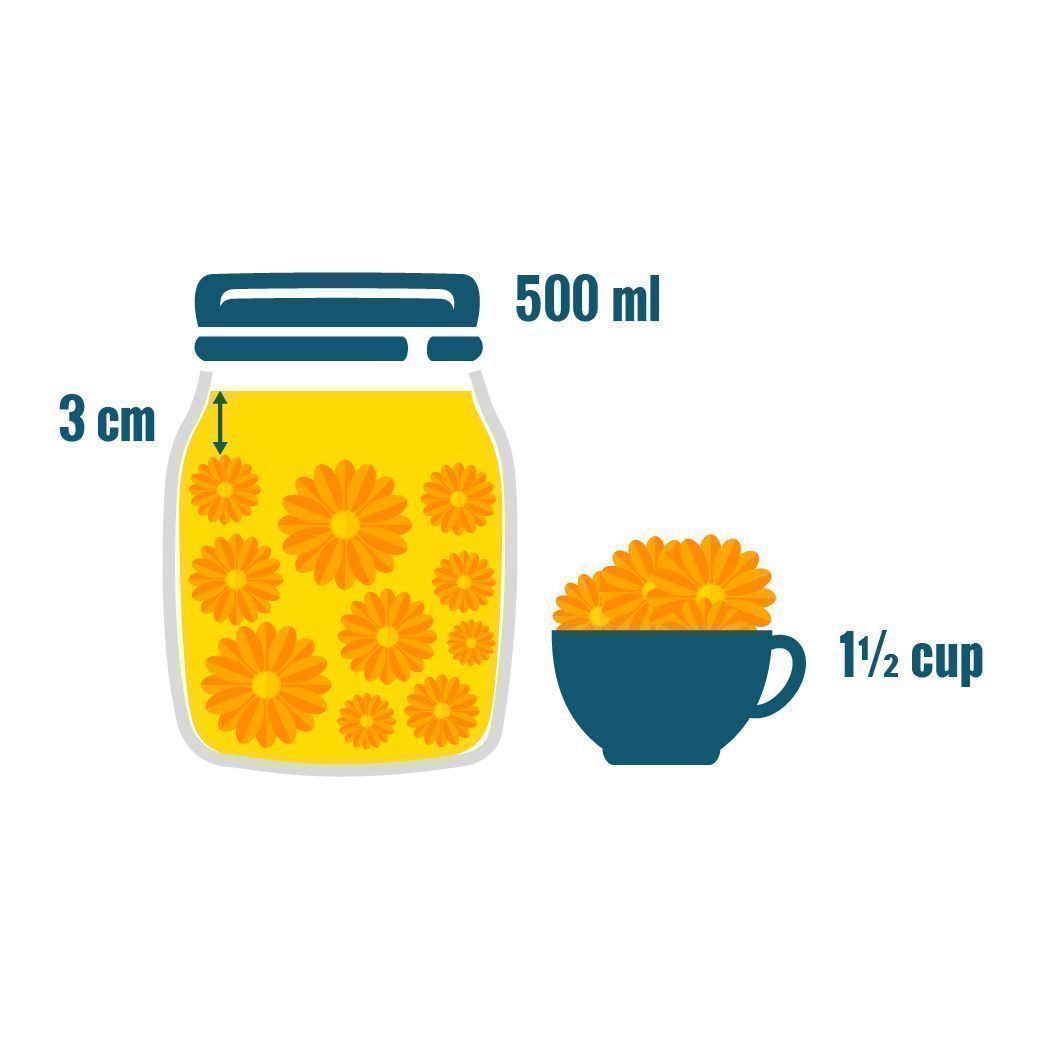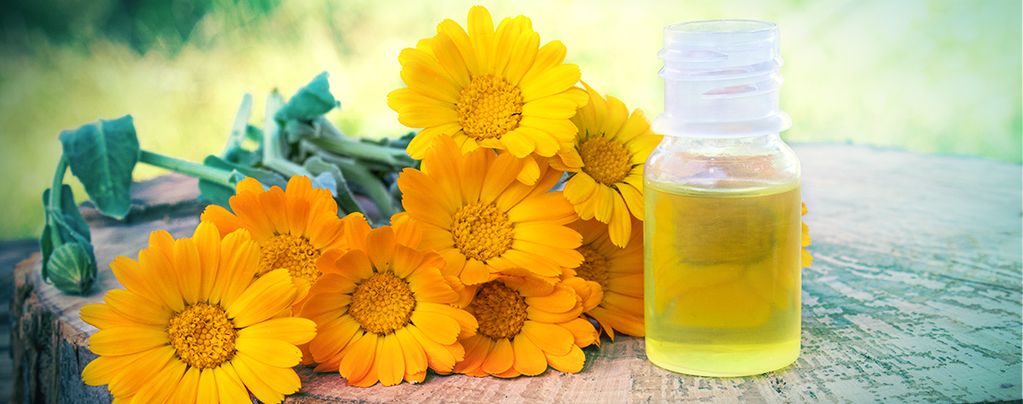
How To Make Calendula Extract & How To Use It
Calendula oil is easy to make and boasts some great benefits for the skin. Find out how to make your own supply in the comfort of your home!
Calendula oil is a botanical extract that can be made at home with ease. The oil is well-known for its soothing properties on the skin and scalp, and has been used traditionally for associated purposes. The extract has a spectacular colour when stored in jars, and is even referred to as “liquid sunshine” because of its striking appearance. In this article, we delve deeper into exactly where calendula oil comes from, how to use it, and how to make your own supply.
WHAT IS CALENDULA?
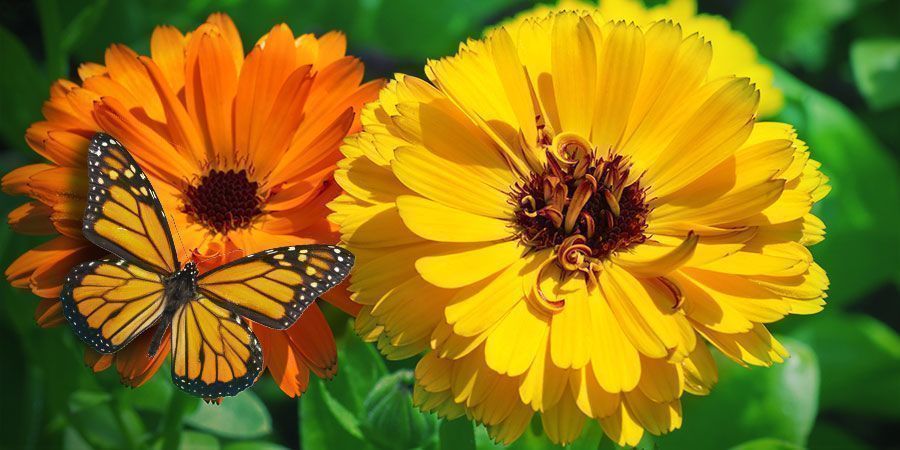
Calendula is a genus of annual and perennial herbs consisting of around 20 species. The most commonly cultivated form is known as pot marigold or simply marigold, which goes by the binomial name Calendula officinalis. The species originates from parts of Asia, Europe, Macaronesia, and the Mediterranean. The flowers of the species feature many bright yellow petals.
Calendula species have been used throughout human history as holistic herbs, and were used ritualistically in both Roman and Greek culture. They are also utilised for culinary purposes and are often included in dishes such as soups. The flowers are rich in an array of interesting molecules such as saponins, triterpenes, and flavonol glycosides. Several of these compounds contribute to the skin-nourishing effects of calendula oil.
Users can easily grow their own crop of calendula at home. These bushy and bright plants aren’t fussy, and do well in both full sun and partial shade. They can handle chalky, loamy, and sandy soils as long as they are well-draining. Sow in situ in spring or autumn, and deadhead regularly to prolong the flowering period.
HOW TO USE CALENDULA OIL
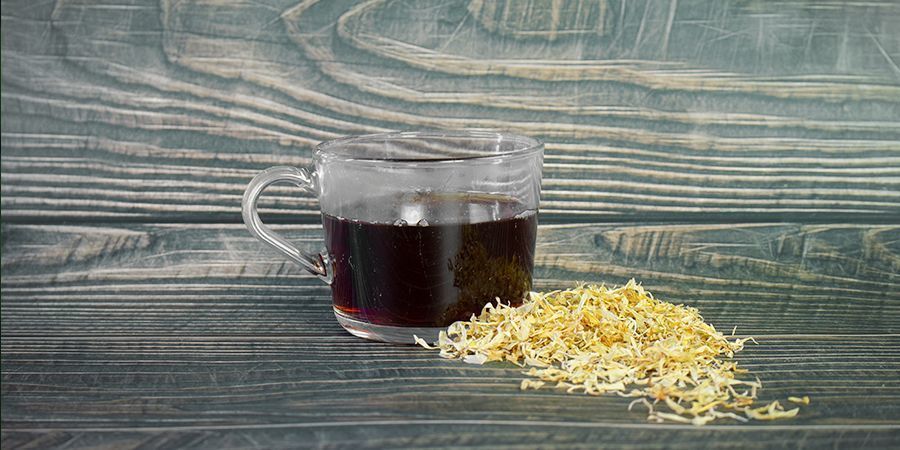
Calendula can be administered orally or topically. For the former, the flowers can be dried and brewed into a tea or ground up and placed into capsules. Moreover, users can make an oral tincture by extracting the active constituents using an alcohol soak over several weeks.
Calendula can be applied topically by extracting flowers into an oil carrier, which can then be used on its own or added to other products such as creams and salves. To use the oil, simply apply to the affected areas and let soak into the skin.
WHAT ARE THE ADVANTAGES OF CALENDULA OIL?
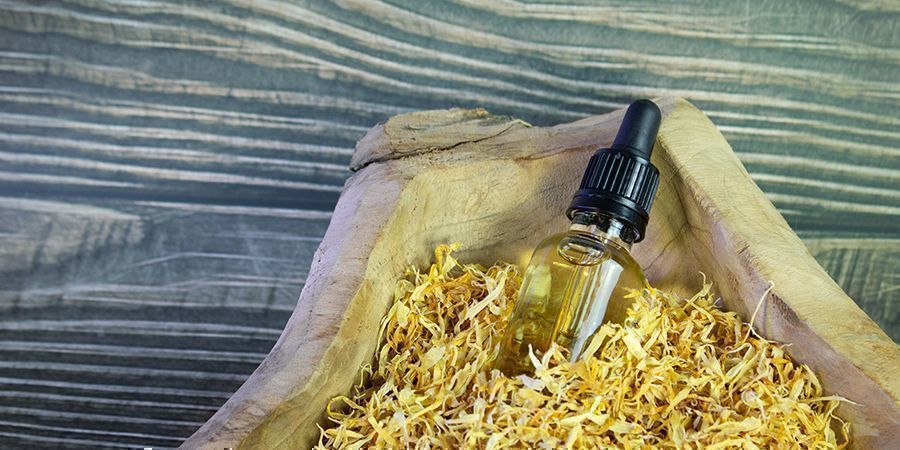
Calendula oil is perhaps best known for its beneficial effects on the skin. Those experiencing rough, chapped, red, or sensitive skin may find the phytochemical mix in calendula oil to soothe the affected areas and support a more vibrant appearance.
The antioxidants in calendula work overtime to reduce signs of ageing, support better skin texture, and overall keep your skin looking and feeling its best. Many individuals even mix calendula oil into their sunscreen to support the skin from multiple angles.
Additionally, calendula oil is thought to have nourishing properties that make it a good option for those with skin imperfections. Use it on blemishes, blackheads, etc. as necessary. As the oil is easy to make and easy to apply, you never have to go without.
And don’t forget about the hair and scalp! Calendula oil is often applied to hydrate on the scalp, and to support overall healthier-looking hair. Just be aware that calendula oil is a natural hair dye for blondes and light brunettes. Some people purposefully exploit this benefit, but others may not desire any changes.
HOW TO MAKE YOUR OWN CALENDULA EXTRACT/OIL
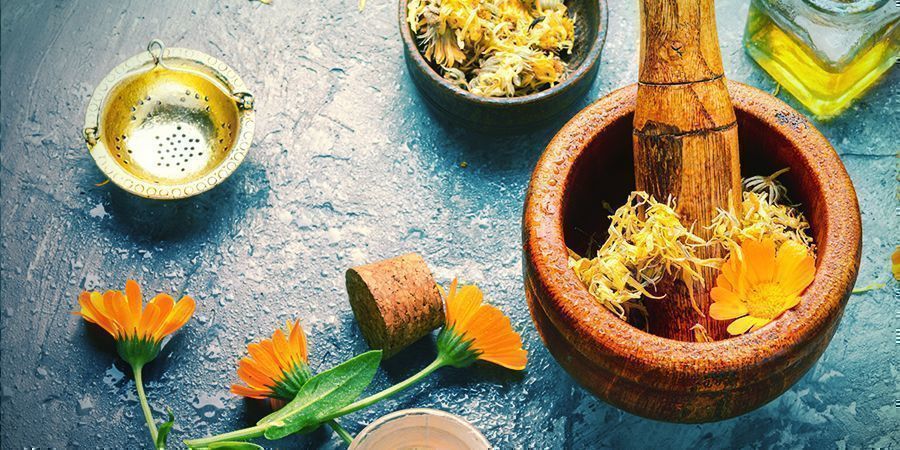
Making your own supply of topical calendula oil at home is easy. Before we delve into the instructions, you’ll need to get some supplies together.
SUPPLIES
- Glass jar
- Lid
- Spoon
- Carrier oil (such as olive oil)
- Dried calendula flowers
INSTRUCTIONS
 |
STEP 1: OBTAIN FLOWERSTo make calendula oil, you’ll need quite a few flowers. If you grow the species at home, deadhead the flowers and move them to a drying rack to remove the moisture inside. If you don’t grow calendula, you can purchase dried flowers from various vendors. |
 |
STEP 2: SELECT A CARRIER OILMany different oils can be used to make calendula oil. Whatever oil you use will serve as a carrier and will help to extract the active constituents. Olive oil and grapeseed oil are popular choices. You could also experiment with hemp seed oil, as it’s also loaded with beneficial molecules. Coconut oil is also a good choice to make a salve that will turn solid at room temperature. |
|
|
STEP 3: ADD FLOWERS AND OIL TO THE JARThe amount of flowers to use depends on the size of the jar. When adding flowers to the jar, you’ll want to aim for about 1½ cups of flowers per 500ml. This leaves enough space to pour in a good amount of carrier oil. Make sure all of the flowers are covered, and that there is around 3cm between the tops of the flowers and the surface of the oil. |
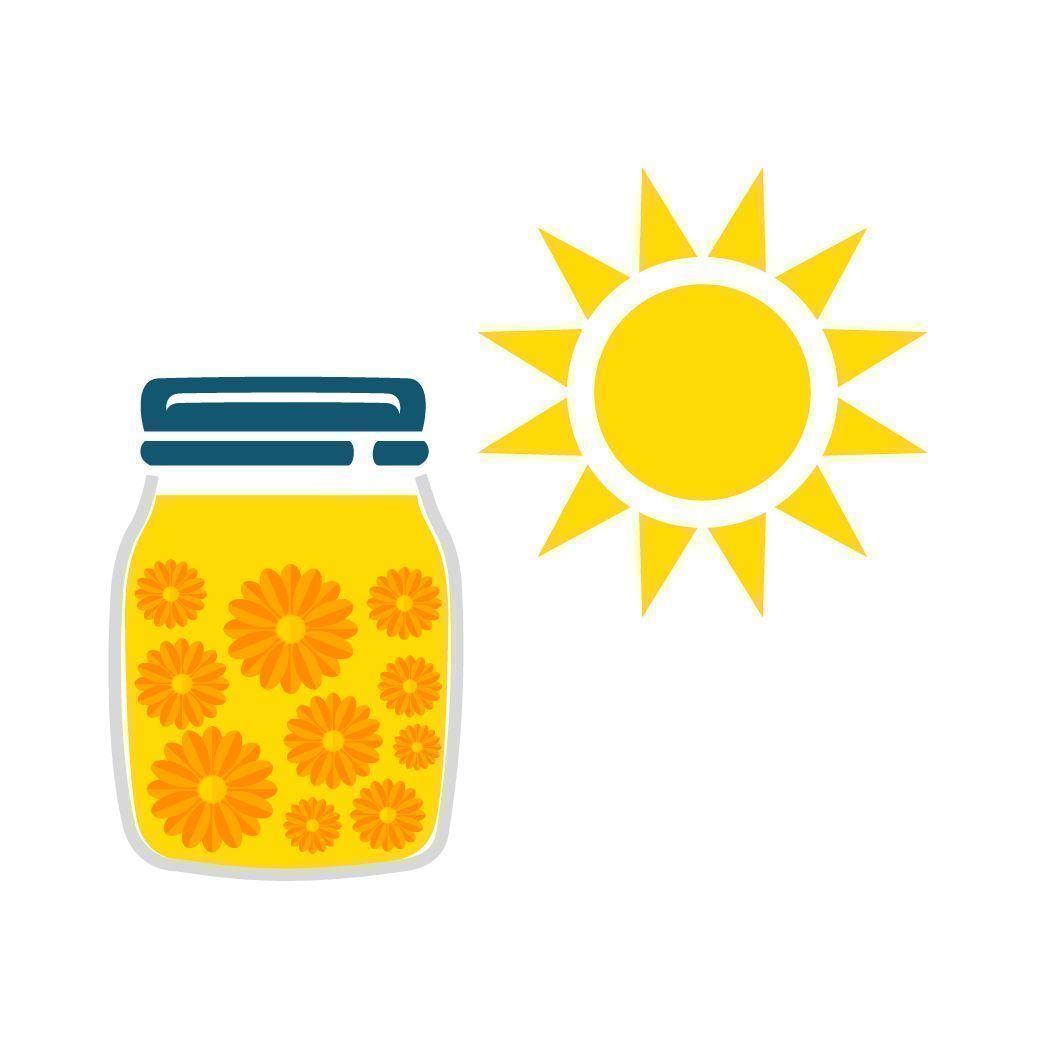 |
STEP 4: LEAVE TO STEEPPlace the mixture in direct sunlight to accelerate the infusion. Leave it to sit for at least 2 weeks and shake daily to boost the extraction process. |
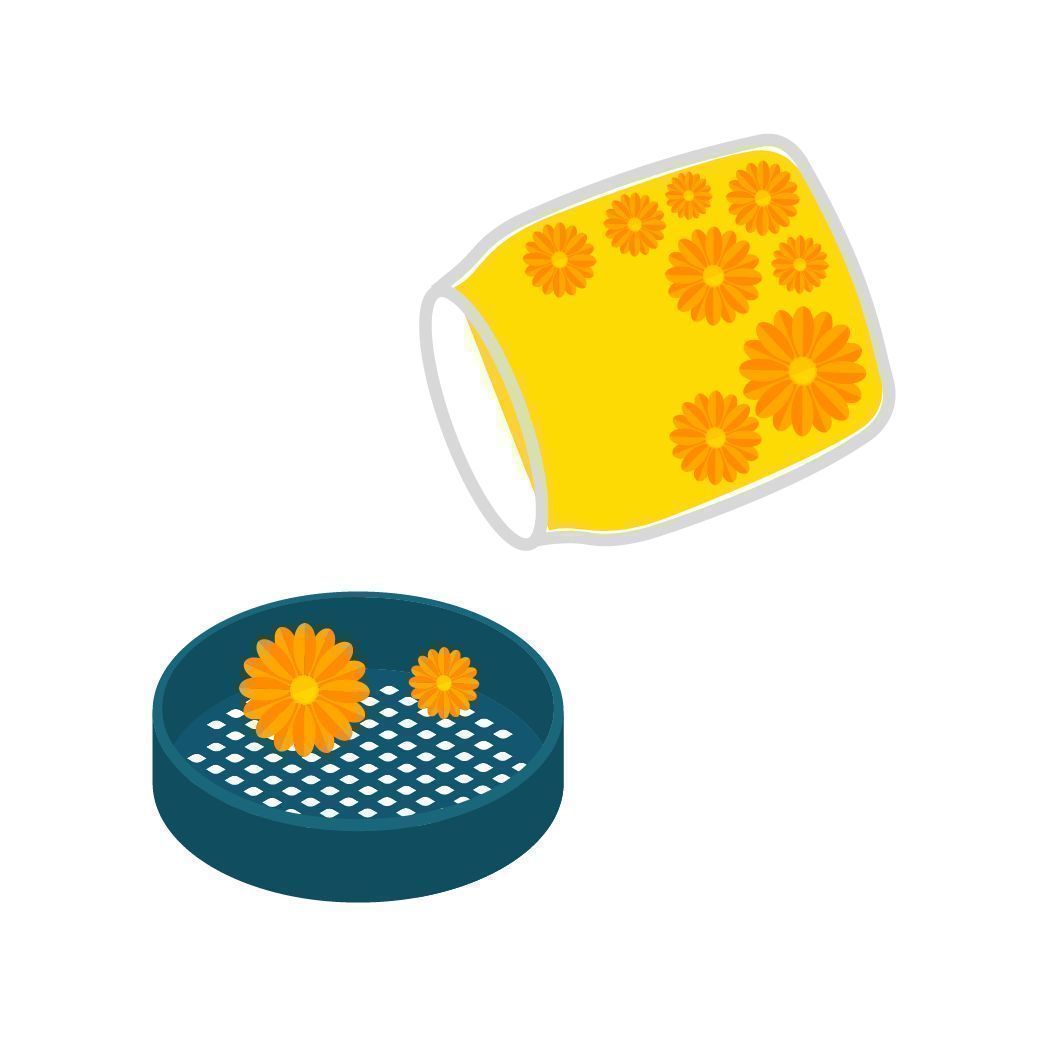 |
STEP 5: STRAINStrain the oil through a fine sieve or cheesecloth into a glass jar to separate the flowers from the extract. Store in a glass jar or transfer to a dropper bottle for easy application. |
- Neda Babaee, Dariush Moslemi, Mohammad Khalilpour, Fatemeh Vejdani, Yasaman Moghadamnia, Ali Bijani, Mahmoud Baradaran, Mohammad Taghi Kazemi, Asieh Khalilpour, Mahdi Pouramir, & Ali Akbar Moghadamnia. (2013). Antioxidant capacity of calendula officinalis flowers extract and prevention of radiation induced oropharyngeal mucositis in patients with head and neck cancers: a randomized controlled clinical study - https://www.ncbi.nlm.nih.gov
-
 3 min
September 8, 2020
How To Make Herbal Incense To Create A Relaxing Atmosphere...
Making incense sticks is an easy process. Simply by following our directions, you can make amazing creations that set the mood with incredible scents.
3 min
September 8, 2020
How To Make Herbal Incense To Create A Relaxing Atmosphere...
Making incense sticks is an easy process. Simply by following our directions, you can make amazing creations that set the mood with incredible scents.
-
 4 min
September 4, 2020
How To Make Your Own Herbal Tinctures At Home
Tinctures are alcohol extractions that are very easy to prepare and even easier to use! There is no real limit on what herbs you can use to make tinctures. Read on to find out which ones come...
4 min
September 4, 2020
How To Make Your Own Herbal Tinctures At Home
Tinctures are alcohol extractions that are very easy to prepare and even easier to use! There is no real limit on what herbs you can use to make tinctures. Read on to find out which ones come...
-
 4 min
December 10, 2019
The Right Herbal Extract For Every Occasion
Desire better sleep? Need to get high without using cannabis? Want to perform better in the bedroom with your partner? There's an herb for that!
4 min
December 10, 2019
The Right Herbal Extract For Every Occasion
Desire better sleep? Need to get high without using cannabis? Want to perform better in the bedroom with your partner? There's an herb for that!
-
 2 min
June 13, 2019
Cannabis Companion Planting: Marigold
Sometimes our plants need a little helping hand. This can be in the typical form of nutrients, but it’s also worth considering companion plants, such as marigolds. The use of companion plants will...
2 min
June 13, 2019
Cannabis Companion Planting: Marigold
Sometimes our plants need a little helping hand. This can be in the typical form of nutrients, but it’s also worth considering companion plants, such as marigolds. The use of companion plants will...








 United States
United States

